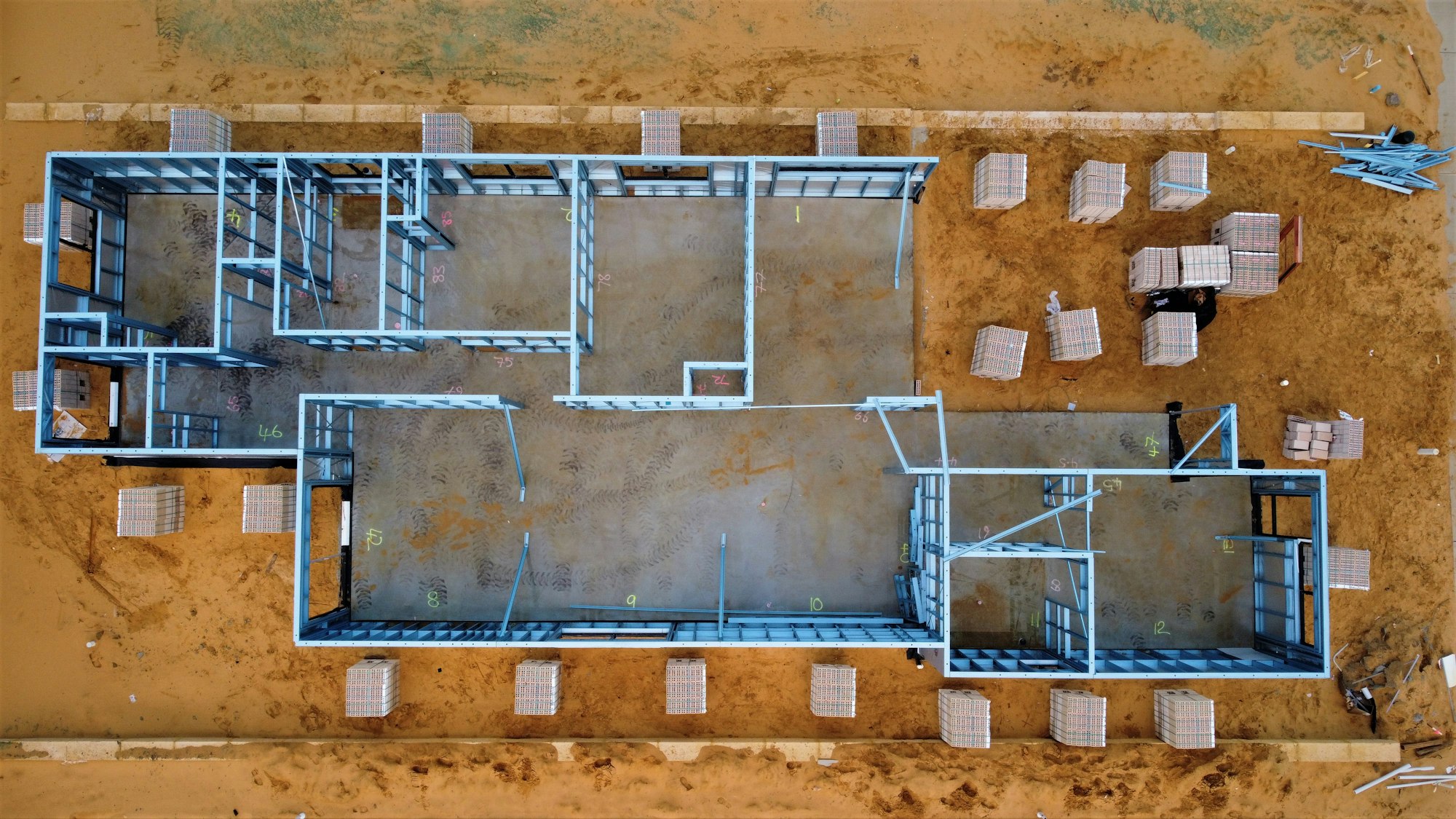You've come to the right place to learn all about residential construction and quality management. Before we forget, if someone forward you this newsletter, don't forget to subscribe to our newsletter so you never miss out!
🤗 Howdy Readers
In this newsletter, you'll find:
This week we spoke with a few different companies who provide construction and quality management software. The companies include: Simpel (AU based, Visibuild (AU based), Sablono (Berlin Based), Dalux (Denmark Based), Conqa (NZ Based) - Next week talking with. All are similar but different (same same, but different), have different features and benefits.
📬️ Post 1 - 🪵 Ever wondered what’s hiding behind the walls of your new home?
Timber isn't just a decorative material; it's literally the backbone of most Aussie homes. From the plantation pine in your wall frames to hardwood in your floors and decks, timber matters—and supply is changing fast.
🔍 What’s going on?
- Softwood plantations (hello, radiata pine) are set to grow a whopping 70% by 2050—great news for structural framing.
- But high-end native hardwoods? That market is shrinking, thanks to environmental protections and fewer native-forest cutbacks..
- And remember those chaotic timber shortages during COVID? They exposed just how vulnerable we are to global disruptions—and why stocking up domestically matters.
🏡 So why should you care?
If you’re building or renovating, delays or material hikes could hit hard. Whether you're choosing framings or decking, knowing what’s coming helps you plan smarter and avoid costly surprises. Plus, there’s a sustainability angle: timber is renewable and low-carbon—so it’s not just practical, but planet-friendly too.
👉 Read the full article, click on the banner image below:

📬️ Post 2 - 📝 Think builders won't budge? Think again!
In this post, you’ll get a clear take on your new home construction contract—and why it’s not set in stone.
🔍 What’s inside this article?
- Negotiation potential: You may not slash the home’s base price, but you can ask for flooring, fixtures, window coverings, flyscreens, landscaping,—especially if it's one of the last lots (house and land package) or close to builder season’s end.
- 📅 Timing is key: Builders often lean toward flexibility at quarter or financial year end, or when only a handful of lots remain (KPIs add pressure to sales at EOM).
- 🤔 Be strategic: Show you're a serious buyer — get pre-approved financing, ask targeted questions (Our C4 Checklist helps you do this), and focus on negotiable extras rather than just the purchase price.
- 👥 Use experts smartly: A buyer's agent familiar with new builds can be your secret weapon—they know which incentives matter, what’s fair, and can push for credits toward upgrades, closing costs, or financing perks.
👉 Read the full article, click on the banner image below:

📬️ Post 3 - 🔍 The irony of “cutting red tape”—and the surprising role of private certifiers
In this post you'll uncover what we think is an ironic twist in Australia’s construction world: those cutting red tape might actually be tying homeowners in knots.
In this short post, we explore how the well-intentioned shift to private certifiers—originally meant to simplify building—has led to unexpected complications, and how this ties into the current conversation around 'cutting red tape'.
Here’s the gist:
- 🏗️ Private vs. public oversight: After the era of independent council inspectors, most new homes are now overseen by private certifiers hired by the builders themselves. Sounds efficient—until conflicts of interest start rearing their head.
- 🕵️♂️ Safety shortcuts: Essential inspections—like slab or waterproofing checks—often happen through photo evidence, or worse, not at all. That’s how hidden problems like leaks and mould slip through.
- 📉 Quality falling through the cracks: With self-regulation being the norm, oversight has weakened. The result? Australia’s homes are racking up mounting defects that could’ve been caught earlier.
👉 Read the full article, click on the banner image below:

💾 Software of the Week: Blip.net
(this is not a sponsored post, we are just trialling & testing a boatload of software currently, prior to starting two new projects soon).
Blip – The Super‑Fast, Cross‑Platform File‑Sharing Sidekick 🚀
Ever needed to send a HUGE file—say a full video project or a massive photo folder—to someone far away? The check out Blip, a lightweight app that lets you share ANY file, no size limit, straight from your device to someone else’s—no cloud uploads or download links required.
🛠️ Why Use It?
- Speed: Transfers start instantly and often complete faster than cloud uploads—because there’s no separate upload/download step.
- Privacy & Security: Files are encrypted with modern TLS 1.3 and go directly device‑to‑device. No risky public links.
- Reliability: Takes care of dropped connections or drive unplugging—Blip picks up where it left off.
🎯 Who’s It For?
Anyone who deals with large files—photographers, filmmakers, students, or even casual users tired of email limits and clunky cloud services. If you’ve bounced between Mac, Windows, iOS, or Android devices, this is for you. It’s like AirDrop—if it worked across ALL your gadgets.
💡 Key Benefits (in plain English):
- Large file support: No more zipping or chopping—send folders as they are.
- Cross-platform: Works on Windows, macOS (12.1+), Android (Pie+), and iOS (15+). Linux support is coming.
- Peer-to-peer (P2P): Files go directly from your device to theirs—no third-party servers in the middle.
✅ Why We Like It:
- It’s super-fast—thanks to P2P tech and smart LAN routing.
- A great alternative to AirDrop—because it’s cross-platform and doesn’t require proximity.
- Send large files easily—even Final Cut Pro bundles carry over intact..
- The team is responsive and friendly, and it’s free for personal use (business plans available for around $25/mo).
⚙️ System Requirements:
macOS 12.1+, Windows 10+, Android 9+, iOS 15+. Linux support is in the works.
So, if you want a secure, speedy—and surprisingly simple—way to send big files between any of your devices (or friends), Blip is worth a go.
👉 Learn more about Blip.net by clicking the link below

ICYMI - the most important construction news from this week
🚀 The latest residential construction news from new sources around Australia for the news week ending 19-07-2025 🔥
News Theme of the Week
"More Talk, Less Action – Housing's Broken Record"
This week’s headlines suggest government targets are slipping, affordability is worsening, and the same industry voices calling to “cut red tape” are behind declining build quality. Despite new announcements on social housing and funding, the scale falls far short. Policies that caused the housing mess are being rebranded as solutions. It’s not just ironic—it’s frustrating.
The recurring theme? Missed targets, superficial fixes, and policy contradictions. These aren’t isolated failures—they’re systemic and self-sustaining.
Music of the week
"Talking Loud and Saying Nothing" – James Brown (1970)
“You’re talking loud… and saying nothing.”
There’s growing frustration with recycled promises and performative reform. Scepticism is mounting—are things really changing, or is it just a new coat of paint on the same broken structure?
We’ve heard the reports, the promises, the funding announcements—yet the problems persist. The public mood is shifting from hopeful to wary.
As the housing debate spins in circles, and policies that broke the system are dressed up as solutions, this song feels like the right kind of reminder: energy doesn’t equal progress, and volume doesn’t equal value.
Can't see the video embed below? Click here to watch on Youtube.
We've highlighted our favourite news articles for the week by marking with a 🧙♂️ or five (yes, we've now changed to Wizards instead of Tacos - because we all need a little magic to make affordable housing appear!).
12-07-2025
NSW wants to build more apartment blocks with faster approvals. Councils aren’t convinced – [LINK]
Not your grandfather’s housing boom – [LINK]
Housing Australia funding to deliver 1,275 new social homes in Victoria – [LINK]
13-07-2025
The fight over your backyard: Why NIMBY has become a ‘dirty word’ – [LINK]
Our comment: The YIMBY/NIMBY debate feels like a distraction from actual policy and meaningful action. It’s inflammatory rhetoric used to divide and stir outrage, rather than address the root causes of the housing crisis. It becomes a sideshow, perpetuated by media outlets incentivised to sell property, broker loans, and promote products through homemaker TV segments. It's modern advertising—the viewer is the product, paying with attention and ultimately money. The solution... to be continued.
Pretending to care about house prices is new again – [LINK]
14-07-2025
Raise taxes to fix budget, Treasury advises Labor in accidentally published advice – [LINK]
Our comment: One benefit of increasing immigration is having more taxpayers. But while the population is squeezed by housing unaffordability and stagnant wages, property values continue to rise. Housing remains a store of wealth and immigration supports this broader strategy—perhaps to offset declining mining tax revenue. When the government spends more (on infrastructure, for instance), it needs to pull funds from the private sector—through taxes.
$1.31 billion for more social housing in Victoria – [LINK]
Our comment: This is a welcome investment, but 1,275 houses is nowhere near enough. We’re short over 50,000 homes each year, not including existing deficits. Add high immigration, rising costs, and competition from government/commercial builds, and residential output will continue to fall. Ironically, as homes become unaffordable for most, rental demand will spike—until that too becomes unaffordable. The result? Declining productivity and social dysfunction. When systems break, change follows. This isn’t good—but from disruption can come new ideas and opportunities.
Another economist warns about intergenerational wealth in Australia – [LINK]
Our comment: Here’s the paradox—policy encouraged housing as a store of wealth, allowing one generation to accumulate it. Now, this very success is viewed as a problem. Instead of reforming the system or increasing resource taxes (a logical step), the government seems focused on taxing the outcome it created. This is less about fairness and more about transferring private wealth into public hands to cover promises.
🧙 Raise taxes to fix budget, Treasury advises Labor in accidentally published advice – [LINK]
Our comment: Increase the PRRT! In April 2023, the ABC reported this was a good idea. We lag behind peer nations in resource tax revenue (e.g. LNG exports like Qatar). Instead of taxing consumers, the government should pursue the resource-based revenues it already has access to. The idea of taxing unrealised gains is laughable—taxing "paper profits" before they’re realised only increases admin costs and gives the government a temporary cashflow injection. It reeks of desperation.
👉️ Read more about the PRRT HERE and HERE or just search for "the case for/against increasing the prrt site:au"
🧙🧙🧙 Westpac Curated – [LINK]
Quarterly Insights Series: Embracing major forces & foundational pillars – [LINK]
Prestige Property Update – [LINK]
Property Update – July 2025 – [LINK]
🧙🧙 Greater Protection For Home Builders – [LINK]
Brisbane couple loses $8,000 to an unlicensed tradie who is now in jail – [LINK]
Our comment: Platforms that connect consumers with trades operate like stockbrokers—they clip the ticket. Little to no vetting is done upfront. They rely on ratings, which are often skewed by extreme reviews (only the very happy or very unhappy leave comments). Most users—the “somewhat satisfied”—don’t rate. These platforms offer convenience but come with fine print: "all care, no responsibility." You’re still left managing quality and outcomes. Cost filters don’t guarantee quality. If you want the job done well, do proper due diligence: check licences, references, and current jobs. For a great resource on vetting people, check out the book WHO. Its a book mainly for hiring people in organisations but the principals apply to any hiring situation. Often the choice in these situations is if we really want to do the necessary work or let it run its course.
15-07-2025
Treasury unintentionally admits housing target won’t be met without raising taxes – [LINK]
🧙 Support payment for renters on Treasury's housing options list – [LINK]
Our comment: Instead of improving housing affordability, renters may receive compensation to keep quiet. Housing remains the ideal vehicle for taxation—both directly and indirectly. Centralising wealth into property makes it easier to shift policy as needed to refill government coffers.
$108k drop: Where home values declined across Australia – [LINK]
16-07-2025
🧙 How to protect yourself against a dodgy tradie — and what to do if you've fallen victim to one – [LINK]
Our comment: The image used shows skirting left short of a door jamb. Likely, the fixout carpenter wasn’t told how to finish the detail—so they left it. The only real options are mitring or chamfering the end at the doorstop. Either way, it won’t look amazing.
It’s good the QBCC is encouraging contracts. But knowing the BIF Act 2017 (or your states equivalence) matters just as much. Construction work is governed by it, and if you receive a payment claim and don’t respond within the required timeframe—even if the work is terrible—you may be legally required to pay before challenging it. So, contracts are step one. Step two? Understand your rights under the BIF Act.
🧙🧙 Climbing construction costs intensify housing accord doubts – [LINK]
Inflated construction costs kept RBA from cutting rates – [LINK]
🧙 Shuttered car factories in Australia could be repurposed to make houses faster and cheaper – [LINK]
🧙🧙 SW pattern book launches with housing designs available for just $1 – [LINK]
Overseas arrivals into Australia fuel new concerns over housing supply – [LINK]
Our comment: At this point, it feels like they think we’re all idiots.
VIDEO: Is Australia's love for large homes fuelling the housing crisis? – [LINK]
Our comment: This feels like narrative-shaping. ABC increasingly comes across as a mouthpiece for interest groups instead of neutral reporting. It seems aligned with government and industry/political positions, without full disclosure.
🧙🧙🧙 Estop right there! Why final certificates may not be the end of the road for builders – [LINK]
17-07-2025
Rising construction costs raise doubts around national housing target – [LINK]
🧙🧙🧙 Industry cautiously optimistic on housing approvals gains – [LINK]
Article excerpt: “Our priority actions around stripping back red tape are permanently repealing Best Practice Industry Conditions on state government projects, and scrapping Project Trust Accounts.
We are calling for the energy efficiency and livable housing requirements in the National Construction Code 2022 to be voluntary, and for a moratorium on new provisions hampering affordability. Evidence from a quantity surveyor’s report we commissioned shows these changes have added $20,000 to $40,000 to construction costs.”
Our comment: If you needed proof that quality isn’t a priority, here it is. Repealing or making energy standards voluntary shows the focus is purely on output—not quality or liveability. Australia's construction quality is already poor. Making standards optional guarantees builders will ignore them.
We wrote a blog post on quality in construction—read it. Especially Page 39 of the AHURI report, which discusses lobbying in construction. Don’t want to read the whole thing? Page 2 outlines the main points. When you compare that to industry comments, it’s clear their goals are not aligned with consumer interests.
As for Project Trust Accounts (PTAs), they’re not difficult. You can open one for free at major banks. Yes, software to manage them costs money, but it’s manageable. If given the choice between prepaying a contractor or requiring a PTA, we’d go with the PTA. The paperwork isn’t hard either. There are clear QBCC checklists to help—[LIKE THIS ONE]
Home building activity rebounds, but housing targets still lag – [LINK]
Living standards and housing crisis worsen after another record month of unplanned migration – [LINK]
18-07-2025
Another week, and yet more blows for Housing Accord targets – [LINK]
Our comment: It’s easy to appear relaxed when the real goal seems to be increasing the tax base via immigration, rather than addressing housing supply or affordability through real reform.
🧙🧙 Greens Say Housing Approval Numbers Underscore Need For Government Developer – [LINK]
Our comment: I usually avoid party-political commentary—it leads to echo chambers. But in this case, it’s worth a moment of self-congratulation. Back in May 2025, we published “Why Government Should Be Australia’s Biggest Landlord: Solving the Housing Crisis” – [READ IT HERE].
In that post, we argued private developers won’t align profit goals with social outcomes. The government must step up, build housing, and reintroduce council inspections to improve quality—rather than leaving it to developers driven by marketing and finance bros focused on “value creation” over substance.
Meanwhile, lobby groups are pushing hard to “cut red tape.” But what does that mean? They want fewer regulations, faster approvals, and less scrutiny—coming from the same industry known for poor quality. Self-regulation has failed. Private certifiers are proof. They were sold to us by lobby groups, and they’ve gutted quality in favour of speed and cost. Read our latest post on private certifiers and cutting red tape HERE
Green shoots for the besieged construction sector – [LINK]
19-07-2025
Newly unveiled public housing made with 3D printing gets mixed response – [LINK]
🧙🧙🧙 Why we cannot build enough homes – [LINK]
The Last Word
Another week, more headlines, more missed targets—and that same old call to “cut red tape” echoing from lobby groups. We’ve heard it all before: shiny announcements, bold promises, and the usual claim that this time will be different.
But maybe what’s really wearing thin isn’t the policy—it’s the trust. Trust that someone’s actually listening, not just talking loud, full of "piss and wind" saying nothing of substance.
Housing, like anything worth building, needs solid foundations. Right now, it feels like we’re patching cracks instead of fixing the frame. Affordability becomes a headline instead of a goal, and reform starts to look like a fresh coat of paint.
👉️ Still, fatigue brings clarity. And clarity can spark change.
This week’s takeaway? Noise isn’t progress. Real change—like a well-built home—takes time, effort, and no shortcuts.
Can't see the video embed below? Click here to watch on Youtube.
😶🌫️ That's all of today
The best way to support us is to share this this with two (2) friends who you think our content will help in some way.
Feel free to reach out on X or Mastodon or Bluesky - @obiwonky - 👋 Anthony
PS: Quality Management Checklist Access
All our published checklists are available to download via the Checklists Link in the navigation menu or directly at https://www.constructor.net.au/checklists/.
To download, simply enter your email when prompted. This allows us to assign you a free license—nothing more. Once completed, you’ll be able to view and download the checklists.
⏬ Each checklist is formatted for A4-sized paper and ready for easy printing. Please note: the files are larger than typical PDFs—around 25–85 MB each—because they’re saved in CMYK (print-ready) format. This ensures high-quality prints, but also means the files are a bit chunkier than usual. They may take a little longer to download depending on your internet speed, so hang in there—it’s worth the wait!
Enjoy the checklists, we hope they help you identify quality improvements in your new home or next project - or at least, get you thinking.

C12 Fixing Stage recently added to the list
Please note: You’ll need to be a member and to log in to access the content.
Help us improve?
Head over to the Feedback tab in the navigation menu to share your thoughts, view our road map, and up vote feature requests. We want to hear from you—because no one likes the sound of one hand clapping.
We've recently added a "Feedback" widget to the website which you can see the black "Feedback" tab the bottom right hand corner of the screen. We wont email you when you leave feedback nor will we add you to any list or contact you about your feedback.













